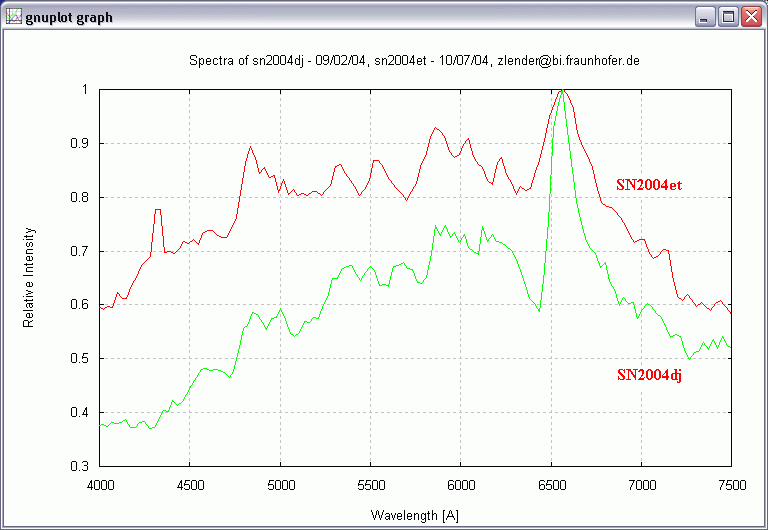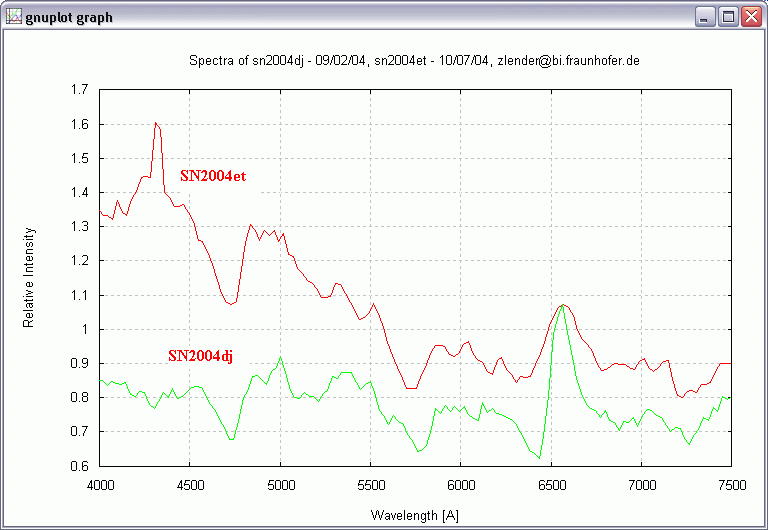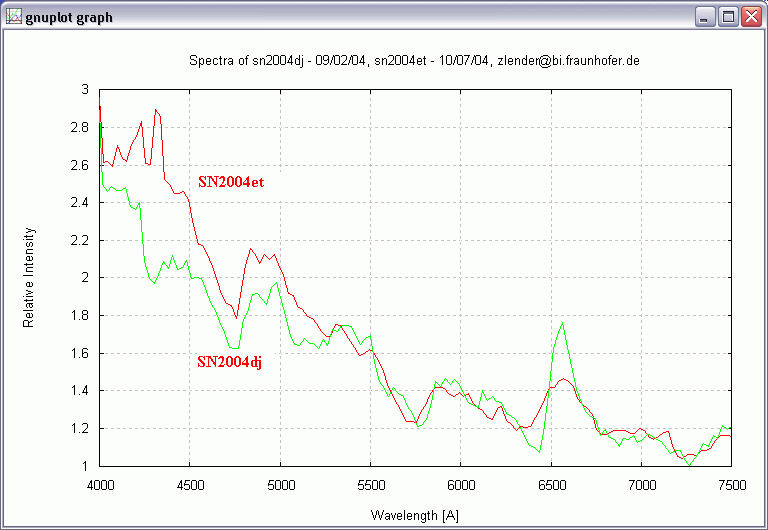
Two bright supernovae in the course of few weeks, and both of Type II, so it is natural to compare the achieved results. What do they have in common, where are differences, what can we learn by now ?

Figure 1: Both spectra calibrated for wavelength only, show the prominent Hydrogen lines at 6563 [A] and 4861 [A], which identify them as Type II supernovae, because in the early stages H dominates by far and Type I sn do not show Hydrogen charcteristics. The lines are broad indicating turbulence ... SN2004dj has more pronouced P-Cygni profiles, characteristic features of Type IIP. It seems further, that SN2004dj falls of with shorter wavelength, but this is caused by atmospheric absorption (see below) and the insensitivity of the Kodak-CCD for blue light . From blueshift in profiles of Hydrogen lines we obtain significant higher shell velocities for SN2004et 10000 km/s compared to 6800 km/s for SN2004dj. Compared to SN2004dj, supernova SN2004et seems to be the more energetic blast.

Figure. 2: Photometric calibrated spectra, spectral response of the CCD. Scattered light. The peak at 4330 [A] in the spectrum of SN2004et results from a foreground star.

Figure 3: Full calibrated spectrum. Steep rise to the blue SN2004et is hotter of both, H-alpha also broader. As the supernovae evolve, the debris will thin and lines of other chemical elements will appear, like iron, strontium, calcium as seen in the spectra of othe Type II SN. But this might be out of my reach.
Comments welcome, contact:
![]()